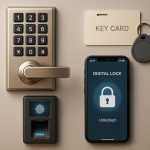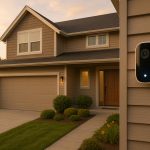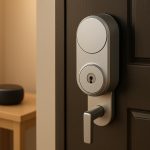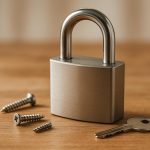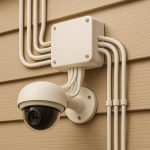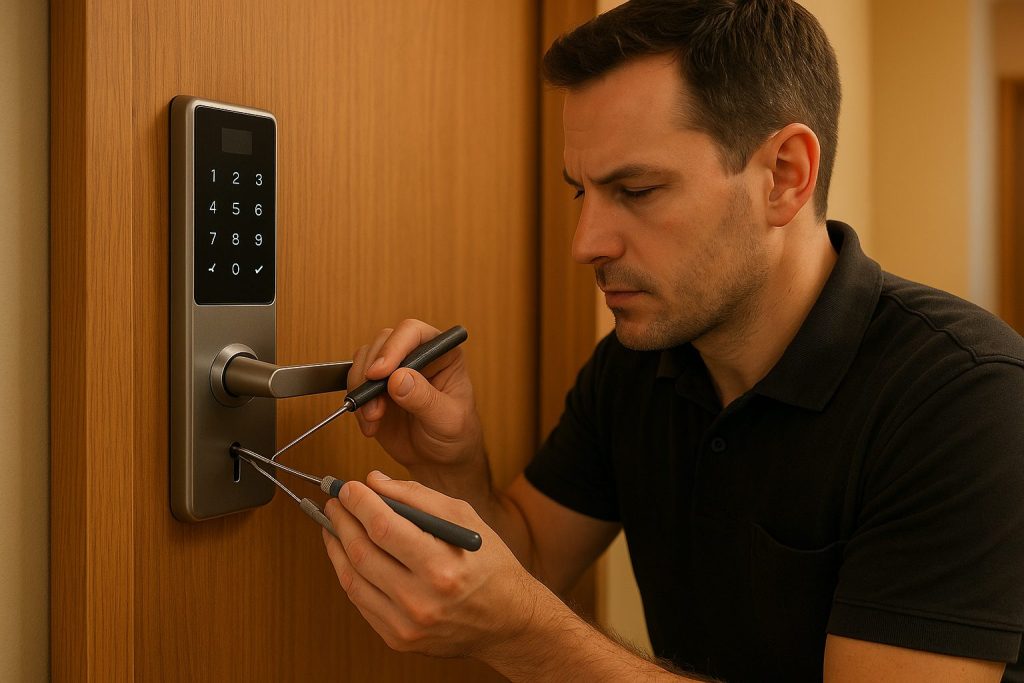Digital lockouts are becoming more frequent as smart locks replace traditional ones. These systems, including keypad locks, biometric scanners, and smart locks, offer convenience but can fail due to dead batteries, forgotten codes, or software glitches. DIY fixes often lead to damage or voided warranties, making professional locksmiths the safest option. They use specialized tools, reset procedures, and, if necessary, drilling to resolve issues without harming the lock. Regular maintenance, like battery replacement and software updates, can prevent future lockouts. For emergencies, services like Sherlock’s Locksmith in Pittsburgh provide 24/7 support to restore access quickly and safely.
How to Reset Electronic Door Lock Without Code
Digital Lock Types and How They Work
Digital locks come in various forms, each with its own design and functionality. Understanding these types can help identify potential issues during lockouts. Here’s a breakdown of the main types and how they operate.
Main Types of Digital Locks
Keypad locks are widely used in homes and businesses. These locks require a numeric code entered on a keypad to unlock the door. They typically use combinations between 4 and 8 digits and can store multiple user codes, making keys unnecessary.
Smart locks connect to Wi-Fi and can be controlled remotely through smartphone apps. They come with features like temporary guest access codes, activity tracking, and integration with smart home systems. Many models also include a traditional key cylinder for backup access.
Biometric locks rely on fingerprint scanners, facial recognition, or iris scanning to verify identity. Instead of storing passwords or codes, they save biological data templates. While these locks offer advanced security, they are more expensive and complex than other options.
Access control systems are commonly used in commercial settings and vehicles. These systems use key fobs, proximity cards, or smartphone credentials to communicate with the lock via RFID or Bluetooth technology.
Electronic deadbolts combine the reliability of standard deadbolts with digital features like keypads or card readers. They provide the security of a traditional lock while offering modern access methods.
Digital Lock Components and Operation
Each type of digital lock relies on specific components that determine its functionality. Understanding these parts can help pinpoint vulnerabilities or reasons for lockouts.
- Control circuit board: This is the lock’s brain, processing user inputs and making access decisions. It stores programming, access codes, or biometric data. If the control board fails, professional repairs are often required.
- Power systems: Most locks use battery packs, though some connect to building power. Residential models often run on AA batteries that last 6–12 months. Low battery warnings usually trigger when power drops to around 20%.
- Input sensors: Depending on the lock type, these include keypads, fingerprint scanners, card readers, or wireless receivers. Sensors translate user actions into digital commands, and their sensitivity impacts reliability.
- Actuators: These mechanisms physically lock or unlock the door once access is authorized. Actuators, typically motors or solenoids, must generate enough force to operate the lock while fitting within standard hardware dimensions.
- Override systems: These provide backup access when the primary system fails. Many locks include a physical key cylinder, while others rely on electronic overrides. The type of override system can influence how locksmiths handle lockouts.
- Memory storage: This component retains user codes, access logs, and settings. Most locks preserve this data during battery changes, but a complete power loss can reset some models to factory settings.
Each component plays a crucial role, and a failure in any one of them can render the lock unusable. When this happens, professional assistance may be needed to restore functionality.
Why Digital Lockouts Happen
Digital locks can stop working for a variety of reasons, often tied to software glitches, power issues, or external conditions.
Wrong or Forgotten Access Codes
One of the most frequent causes of lockouts is user error. It’s easy to forget access codes, especially if they’re overly complex or haven’t been used in a while. Sometimes, users even change their codes and forget to save the new ones, leaving themselves locked out.
Another common issue is multiple failed attempts. Most digital locks have built-in security measures that temporarily disable the keypad after several incorrect entries. While this feature helps prevent tampering, it can also lock out legitimate users who simply misremember their codes.
Then there are code conflicts, which happen when duplicate codes are programmed or when old codes aren’t properly erased. These errors can stop new codes from working or cause valid ones to be rejected.
Dead Batteries and Power Problems
For digital locks, dead batteries are the number one culprit behind failures. Most residential locks use standard AA or 9V batteries that last about 6 to 12 months. When the batteries start to run low, the lock might slow down, fail to respond, or stop working altogether.
If your lock is hardwired, power fluctuations can also be a problem. Electrical surges, brownouts, or outages may reset the lock to its factory settings, wiping out stored codes and user data. In some cases, the entire programming is lost.
Even though most modern locks provide low battery warnings – like beeping sounds or blinking lights – these alerts often go unnoticed. As a result, users might not replace the batteries until the lock completely fails.
System Failures and Malfunctions
Software glitches can cause locks to freeze, stop responding, or disconnect entirely. Fixing these issues often requires a system reset or a firmware update.
For smart locks, connectivity problems are another headache. Weak Wi-Fi signals, Bluetooth interference, or outdated firmware can block unlock commands.
Lastly, environmental factors can damage the lock’s components. Moisture can corrode electronic parts, and extreme temperatures might cause sensors to fail or keypads to stop working. These types of failures often require professional repair, which will be discussed in the next section.
sbb-itb-643e28e
Locksmith Methods for Digital Lockouts
When dealing with digital lockouts, locksmiths follow a step-by-step approach, starting with non-invasive techniques and moving to more invasive ones only if necessary. This ensures both the property and the lock system remain as intact as possible.
Verifying Ownership and Assessing the Lock
Before any work begins, locksmiths confirm the requester’s ownership. Typically, this involves checking a government-issued ID or other documents that prove ownership or tenancy. Once verified, the locksmith carefully examines the digital lock system. They take note of the manufacturer, model, and security features since different brands and designs require specific approaches.
The locksmith also checks for any visible damage, corrosion, or signs of tampering that could influence their methods. Understanding the lock’s power source – whether battery-powered, hardwired, or connected to a smart system – is another critical step. Each type requires unique tools and techniques, often involving mobile-enabled solutions. Based on this assessment, the locksmith chooses the safest and least damaging method to gain entry.
Non-Destructive Entry Techniques
Modern locksmiths come equipped with advanced tools designed to bypass digital locks without causing harm. These electronic tools can directly interface with the lock’s control circuits, effectively overriding keypad inputs and granting access.
Another common method is performing a software reset. Many digital locks have hidden reset buttons or specific key sequences that restore factory settings. While this process erases programmed codes, it allows immediate access and lets the user reprogram the lock afterward. Locksmiths often consult comprehensive databases of reset procedures tailored to various lock models to execute this method effectively.
For smart locks, specialized diagnostic tools and mobile apps are invaluable. These tools can read error codes, check battery levels, and even trigger emergency unlock sequences. Additionally, some locks feature mechanical override options that skilled locksmiths can access using specialized picks and probes, all without damaging the lock.
Drilling as a Last Resort
If non-invasive methods fail, drilling becomes the final option. This approach is used only when electronic bypasses and resets prove ineffective. Locksmiths use precision drill bits to target specific components, such as the control modules or mechanical override points, depending on the lock’s design.
High-security digital locks may require more complex drilling techniques, such as targeting multiple points or using specialized tools to penetrate hardened materials. Even in these situations, locksmiths aim to minimize damage and maintain the lock’s integrity as much as possible.
After drilling, many digital locks can be repaired instead of replaced. Locksmiths often restore the lock’s functionality and appearance. However, in cases where the damage is extensive or the lock fails repeatedly, a full replacement may be necessary.
Preventing Future Lockouts and Security Upgrades
Once you’ve resolved a lockout, it’s time to think about preventing it from happening again. Upgrading and maintaining your digital lock system not only reduces the risk of future lockouts but also improves overall security.
Upgrading to Smarter Lock Systems
The latest digital locks come with multiple backup access options, making lockouts less likely. For example, many smart locks now include smartphone app access, physical backup keys, and emergency override codes.
Biometric locks are a cutting-edge solution that use fingerprints, facial recognition, or iris scans for access. Since your "key" is essentially a part of you, there’s no chance of forgetting it. These systems often allow multiple user profiles and include a keypad backup for situations where the biometric scanner might not work.
Multi-factor authentication locks take security a step further by combining two or more access methods – like a PIN code paired with a smartphone app, or a key card combined with a fingerprint scan. This layered approach ensures that if one method fails, others are still available. These systems are especially useful for businesses, where different employees may require varying levels of access.
For added convenience, modern keyless entry systems offer temporary access codes. This feature is perfect for property managers or Airbnb hosts who need to grant limited access to tenants or guests without the hassle of spare keys.
Routine Maintenance and Updates
Keeping your digital locks in good shape is just as important as choosing the right system. Start by monitoring battery levels and updating software regularly. High-quality digital locks typically alert you to low batteries through LED lights, app notifications, or audible signals. To avoid being locked out due to a dead battery, replace them every 6-12 months, depending on usage.
Just like your phone or computer, digital locks need software updates to stay secure and reliable. These updates often include fixes, security enhancements, and new features. Some smart locks handle updates automatically when connected to Wi-Fi, while others require manual updates through the manufacturer’s app.
Testing all access methods – backup keys, app connectivity, and override codes – on a monthly basis can help you catch potential problems early. Additionally, reviewing access logs every few months can uncover unusual activity, such as unauthorized access attempts or system errors. These logs can also reveal hardware issues before they lead to a lockout. If you notice persistent problems, it’s wise to call in a professional.
Emergency Locksmith Services: A Safety Net
Even with the best precautions, lockouts can still happen due to unexpected system failures, power outages, or user mistakes. That’s where professional emergency locksmiths come in. They provide immediate help, no matter the time or situation.
Sherlock’s Locksmith, for instance, offers 24/7 emergency services throughout Pittsburgh, PA. Their certified technicians are equipped to handle a wide range of digital lock systems. Whether you’re locked out of your home at midnight or dealing with a commercial security failure during work hours, they’ll come directly to your location.
Emergency locksmiths are especially helpful during extreme weather conditions, when locks might malfunction due to temperature changes, moisture, or power issues. These professionals understand how weather impacts various lock types and carry tools to address such problems. Quick response times are critical during lockout emergencies, particularly in unsafe areas or harsh weather.
Beyond resolving the immediate issue, professional locksmiths also offer post-lockout consultations. They can help identify the root cause of the lockout and suggest improvements, such as upgrading to a more reliable system, establishing better maintenance habits, or adding backup access options. These steps can make future lockouts far less likely.
Conclusion: Professional Help for Digital Lock Problems
Digital lockouts can happen to anyone, even the most careful users. When keypads stop working, batteries die, or systems fail, turning to professional locksmiths is the safest and most effective solution. They can help you regain access quickly without causing any damage to your property.
Trying to fix the issue yourself might seem tempting, but it often leads to unnecessary expenses or even security risks. Professionals ensure that your door, frame, and lock mechanism remain intact, and they make sure your lock functions properly after resolving the issue – keeping your property secure.
Prevention is key to avoiding digital lockouts. Simple steps like replacing batteries regularly, keeping software updated, and testing your system can address many common problems. However, even with the best maintenance, some failures – like those caused by extreme weather or unexpected power outages – are unavoidable. Combining preventive measures with access to emergency locksmith services, as discussed earlier, is the best way to ensure your digital lock remains reliable.
For residents of Pittsburgh, having dependable 24/7 locksmith support is a must. Sherlock’s Locksmith offers peace of mind with certified technicians who understand the ins and outs of modern digital locks. Whether it’s a residential smart lock malfunctioning in the middle of the night or a commercial system issue during business hours, their quick response ensures you regain access without jeopardizing your security.
As digital lock technology continues to advance, the role of skilled professionals becomes even more critical. When technology falters, the right expertise and tools are what truly make the difference in resolving lockouts safely and efficiently.
FAQs
What causes digital lockouts, and how can you avoid them?
Digital lockouts can happen for several reasons, including forgotten PINs or passwords, dead batteries, or faulty electronic components caused by wear and tear, weather exposure, or technical issues. When these problems strike, they can leave you stranded outside your home, office, or vehicle.
To avoid the hassle of a digital lockout, here are a few practical tips:
- Have a backup plan: Keep spare keys or access codes in a secure but accessible spot, like a trusted lockbox or with someone you trust.
- Stay on top of maintenance: Regularly check your lock’s batteries and look for any signs of wear or damage that might cause issues later.
- Consider smart upgrades: Newer digital locks often come with features like app-based controls or biometric entry, reducing the need for codes or physical keys.
Being prepared and keeping your locks in good condition can save you from the frustration of being locked out when you need access the most.
How do locksmiths unlock digital locks without causing damage?
Professional locksmiths rely on specialized tools and methods to open digital locks without harming them. These include manufacturer-approved approaches such as using override codes, reprogramming the lock, or employing non-invasive tools specifically designed for smart locks. By steering clear of forceful or destructive tactics, they ensure the lock stays intact and fully operational.
Certified locksmiths are also well-trained to work with a wide range of digital lock systems. Using advanced technology and precise techniques, they can handle lockouts efficiently while keeping the lock and surrounding components safe from damage.
How can I maintain my digital lock and prevent getting locked out?
To keep your digital lock functioning smoothly and avoid unexpected lockouts, consider these straightforward maintenance tips:
- Keep the exterior clean: Gently wipe the lock with a soft, dry cloth to remove dust, dirt, and fingerprints. Steer clear of harsh chemicals that might harm the finish.
- Monitor and replace batteries: Regularly check the battery level and replace them as needed. Stick with the same brand for consistent performance, and keep a backup power source, like a 9V battery, on hand for emergencies.
- Maintain moving parts: Check for debris or signs of wear on the mechanical components. Apply lubrication as needed to keep everything running smoothly.
- Stay updated: If your lock includes smart features, ensure the firmware is updated regularly to maintain security and functionality.
With these simple steps, you can extend the life of your digital lock while minimizing the risk of inconvenient lockouts.



